When it comes to maximizing your tomato harvest, it’s often recommended to prune your tomato plant. But as far as how to prune “correctly,” people have some strong opinions about this.
Prune to only one stem? Prune some of the suckers? Prune all the suckers?
What I’ve found in my many years of gardening is that common wisdom isn’t necessarily the correct (or only) way to do things, and how I prune tomatoes has changed according to where I live and what I expect out of my plants.
Here’s what I do now—and a few tips on why (and how) you should prune your tomato plants.
First, what is a tomato sucker?
A sucker is the little branch that emerges from the “elbow” of a tomato vine. You’ll see it growing from the junction where the main stem (called an axil) meets a leafy branch at a 90-degree angle. The side shoot that forms at a 45-degree angle is a sucker.
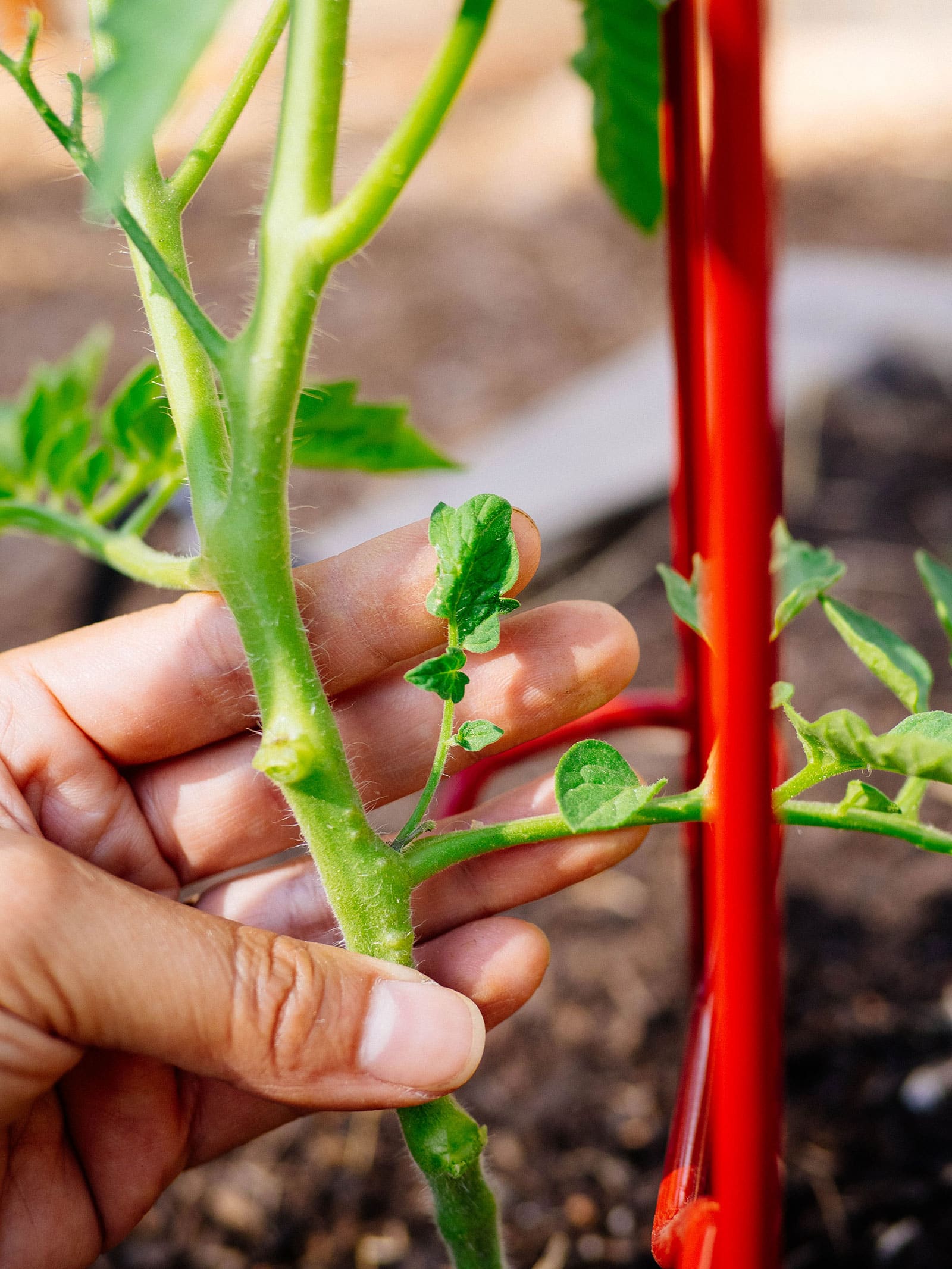
If left alone, a sucker will eventually grow into a branch that produces more leaves and fruits, resulting in a bushy tomato plant.
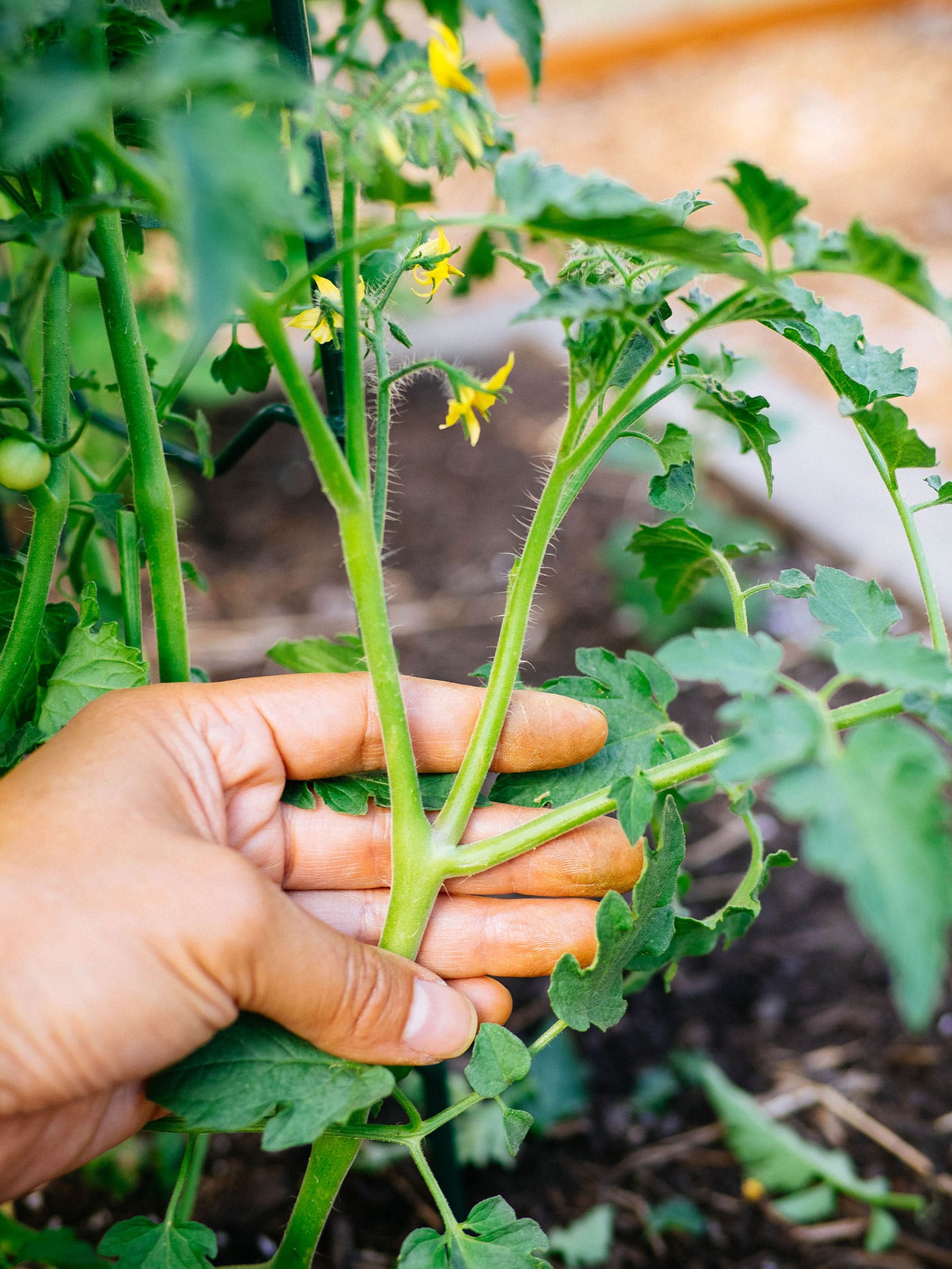
Most gardeners consider suckers to be “bad” because they suck some of the plant’s energy, but they’re a natural part of tomato plant growth. In my view, each sucker offers a promise of more fruit, which I can’t complain about!
So while the usual advice is to cut off any and all suckers when you see them, is that really the best thing to do?
To prune or not to prune
First off, if you despise garden chores, you can cross this off your list. Removing tomato suckers is not a necessity at all.
But! There are pros and cons to cutting them off and you can settle the debate by asking yourself one simple question:
Do you want bigger tomatoes, or more tomatoes?
Removing the suckers means bigger tomatoes
Cutting off the suckers does contribute to bigger tomatoes. You’ll get fewer fruits overall since you’ll have fewer branches, but the fruits your plant produces will grow larger. That’s because removing the side shoots reduces the competition for nutrients and focuses the plant’s energy on producing larger fruits.
Pruning the suckers also helps keep your plants healthy, as it increases airflow around the leaves, reduces the risk of disease, and limits the number of nesting places for pests.
Keeping the suckers means more tomatoes
If you leave the suckers on the plant, those suckers will turn into more vines that will produce more flowers and—you guessed it—eventually more fruits. Each vine will also require more resources from the plant so in most cases, the fruits will be smaller but you’ll get a lot of them and a longer fruiting period.
It’s a toss-up between bigger tomatoes or bigger yields and whichever option you choose, there’s no severe consequence either way. It really just depends on your gardening goals.
That said, here’s what I currently do in my own garden…
I leave the suckers on my tomato plants
Let me back up for a moment, and confess that for years (the entire time I lived in Southern California), I never pruned my tomato plants. I just didn’t see a need to. Being in zone 10b afforded me an extremely long growing season (often extending into winter) and I had so many sweet, juicy tomatoes that I didn’t care what size they were (or if I lost a few to pests).
But now I live in Central Oregon, where my last frost is in June and if I’m lucky, I can stretch my growing season into September before my garden is hit with frost again. I need my tomato plants to produce fruit before they freeze, so they can’t be wasting energy on excessive leaf production. But pruning all the suckers won’t help in my case.
I don’t want to snip all the suckers on my plants because it feels like I’d be hedging all my bets on just a few tomatoes that I hope will get really big. What if they don’t ripen in time? What if a disease wipes them out? What if hornworms decimate my tomato crop?
I don’t want so much riding on a select number of large fruits. I want a continuous supply of small fruits throughout the season, and if some of them turn out less than perfect, I’m okay with that because I’ve got more coming.
So the best method for me, based on my goal, is to keep the suckers.
But—I don’t keep every single one of them. I still prune my plants, though I do it selectively to ensure both a healthy plant and a steady supply of tomatoes.
How to prune tomatoes for a productive harvest
If you have a determinate tomato variety (also called a patio or bush tomato), stop right here. You do not need to prune your plant.
Determinate tomatoes grow to a predetermined height and produce all their fruits at once. Removing suckers from determinate plants will ruin your harvest rather than help it.
But if you’re growing an indeterminate tomato variety, pruning not only promotes plant health, it keeps your plant from becoming too unruly. Tomato plants are tender perennials and will continue producing stems and leaves (instead of flowers and fruits) until frost forces their life cycle to an end. By pruning selectively, you can tell your plant what you want more or less of and help refocus its energy.
Step 1: Prune to one or two main stems.
Most tomato plants develop with what’s called a “leader,” or a main stem from which all other growth emerges. Occasionally there may be two stems, or even multiple stems branching out at the base.
Depending on your trellising method, your first pruning task—within a few weeks of planting—is to pick one or two main stems to be the providers. I find this makes it easier to guide the growth of the plant and make pruning more manageable.

Here’s how I decide:
- If I’m using a large tomato cage or a Florida weave trellis for support, and/or planting early in the season, I’ll keep two leaders.
- If I’m using a tomato ladder or string trellis, and/or planting late in the season, I’ll prune to only one leader.
If your plant has several main stems, select the largest one (or two) and remove the others with a clean pair of pruners.
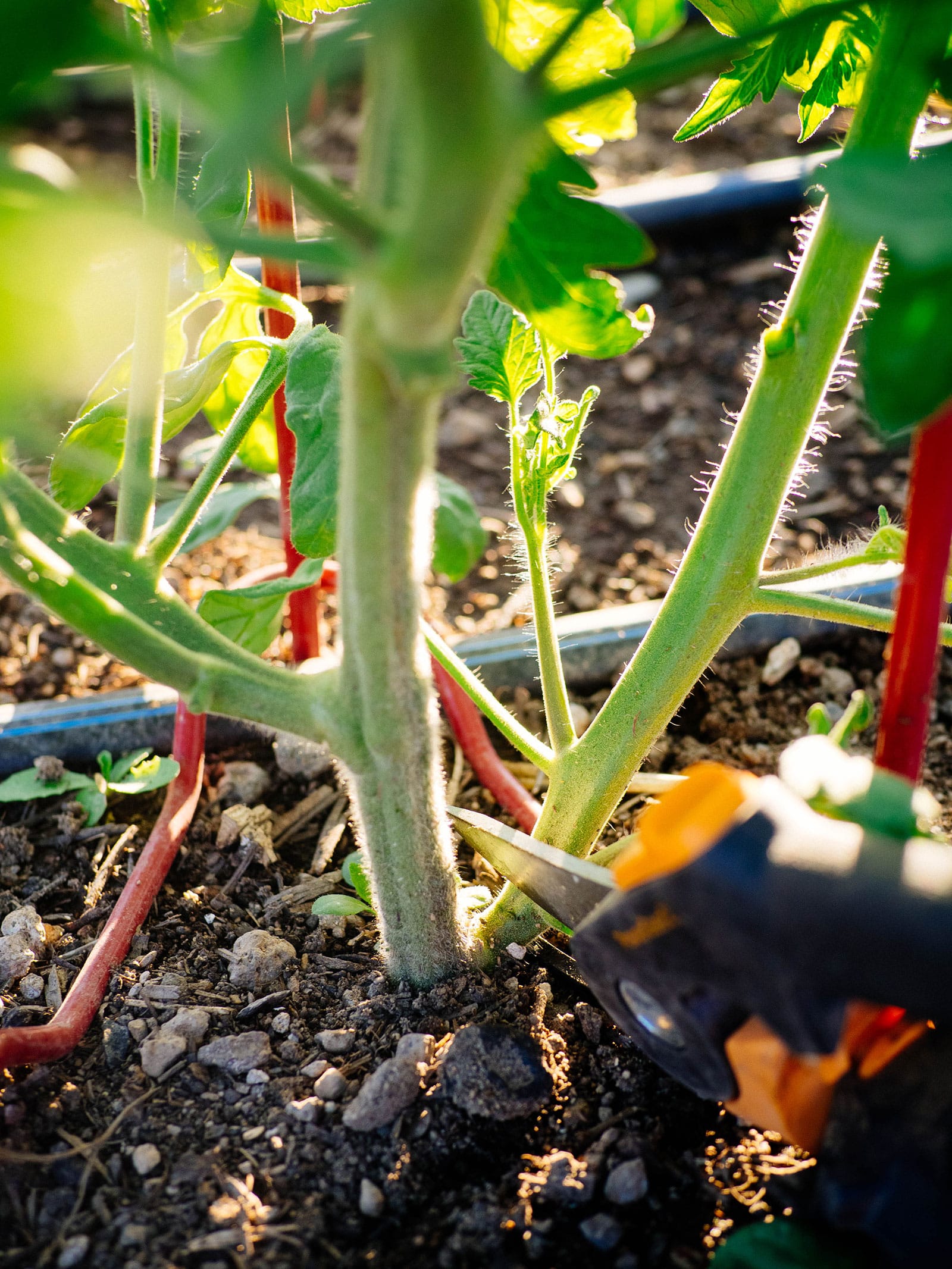
Continue to cut off any new stems that sprout at the base throughout the growing season.
Step 2: Remove stems and leaves that are touching the ground.
Stems and leaves that sit on the soil are more susceptible to pests and diseases, so it’s good practice to remove any low-hanging foliage to reduce soil-borne diseases and improve air circulation.
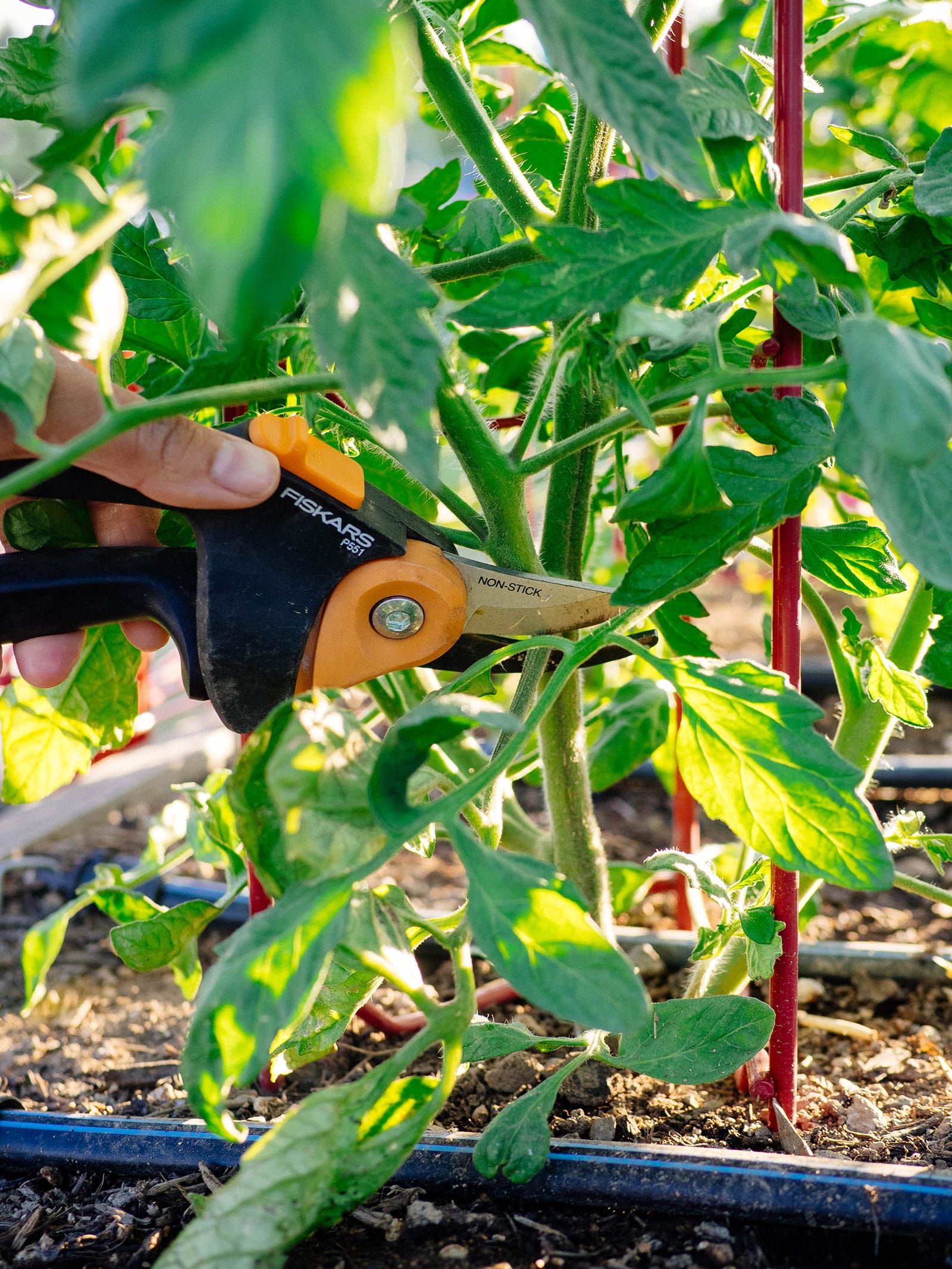
Add a layer of mulch around your plant to keep fungal spores in the soil and off the leaves.
Read more: My favorite kinds of organic mulch for a vegetable garden
Step 3: Prune stems below the first flower cluster.
When the first flowers appear, prune all the stems and leaves below that cluster. This tells your plant that you’d like it to spend more energy on producing more flowers and less energy on growing more leaves.
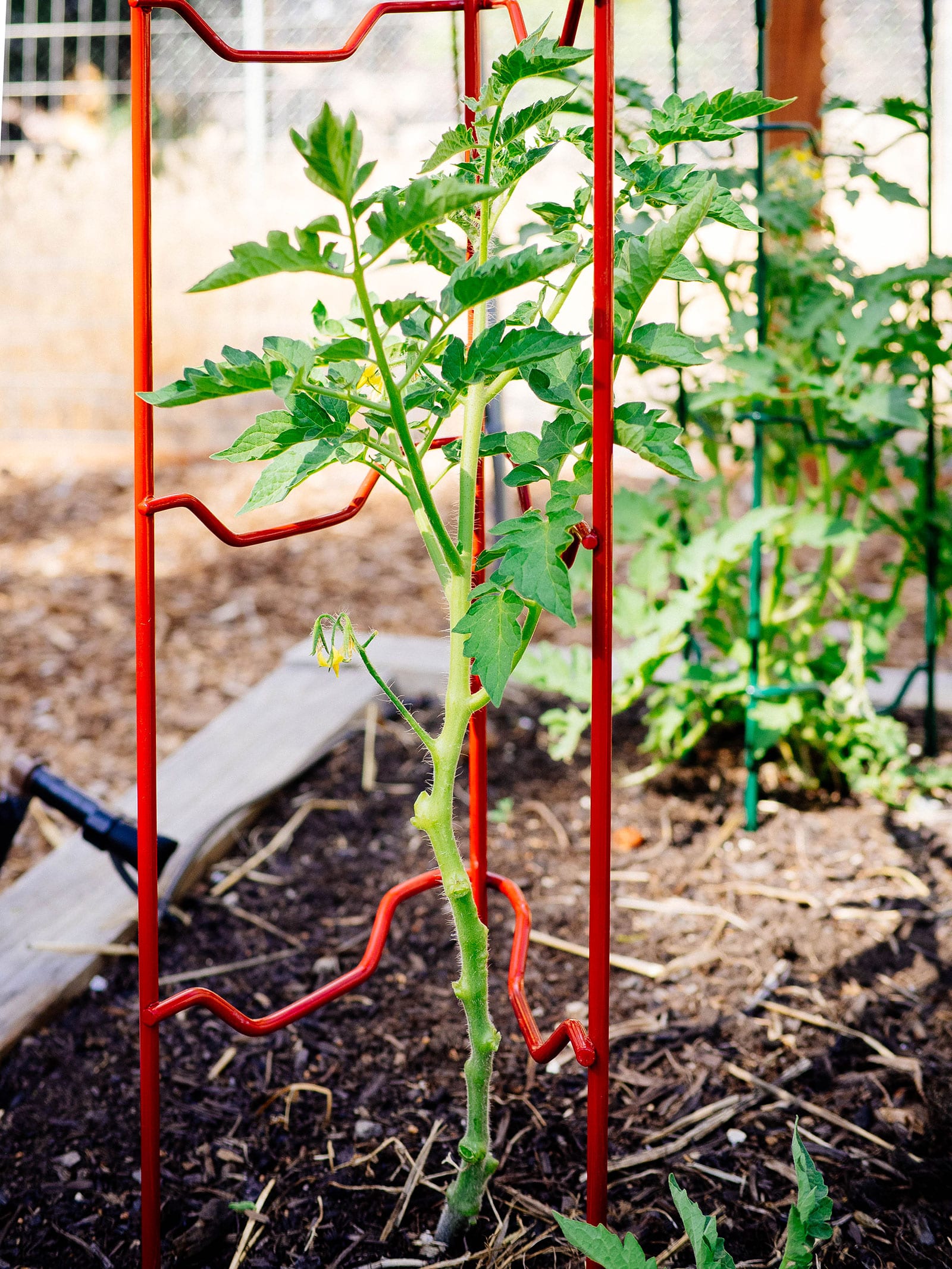
While leaves are crucial for photosynthesis, you only need to keep the minimum amount of leaves required to support the plant. Every leaf is something that needs nutrients and water, and you’d rather the plant spend those resources on flowers and fruits than extraneous leaves.
Step 4: Prune any non-producing vines.
Every two to three weeks, prune any lower vines (up to a third of the plant’s foliage) that don’t have flowers.
This is where my method goes against what you’ve likely been told: instead of pruning the suckers, I prune non-producing vines so the plant can focus its energy on growing and ripening fruits on other vines. So if the lowest branches aren’t producing flowers or fruits, I snip them off.
Sometimes this means I remove the branch that’s right next to the sucker, but leave the sucker because it has flowers.
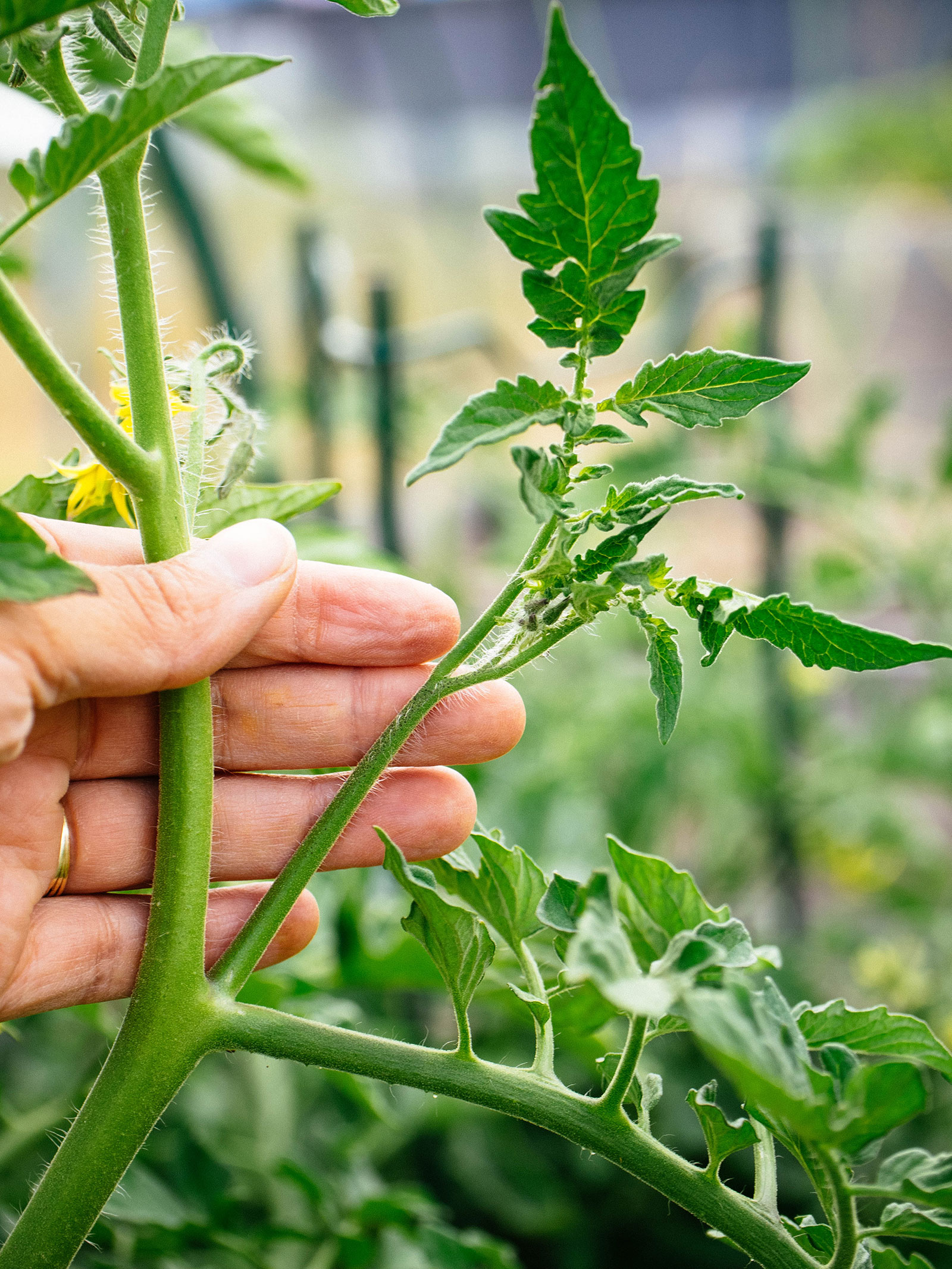

While you’re at it, you should also remove any dead, discolored, or damaged leaves (particularly on the lower branches) and discard them in the trash (not the compost pile, as these could be signs of disease). Damaged leaves are no longer supporting the plant, so they need to go.
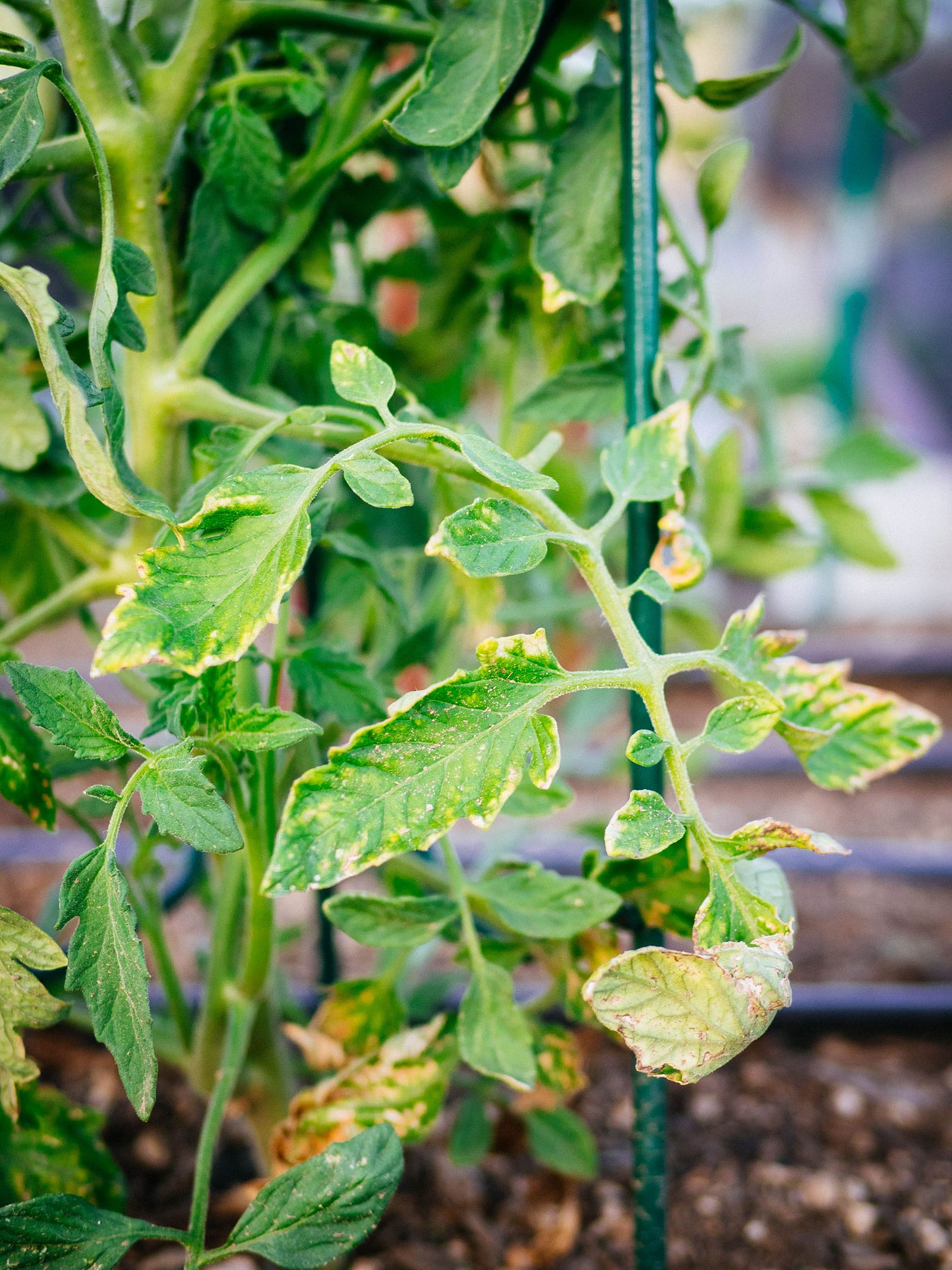
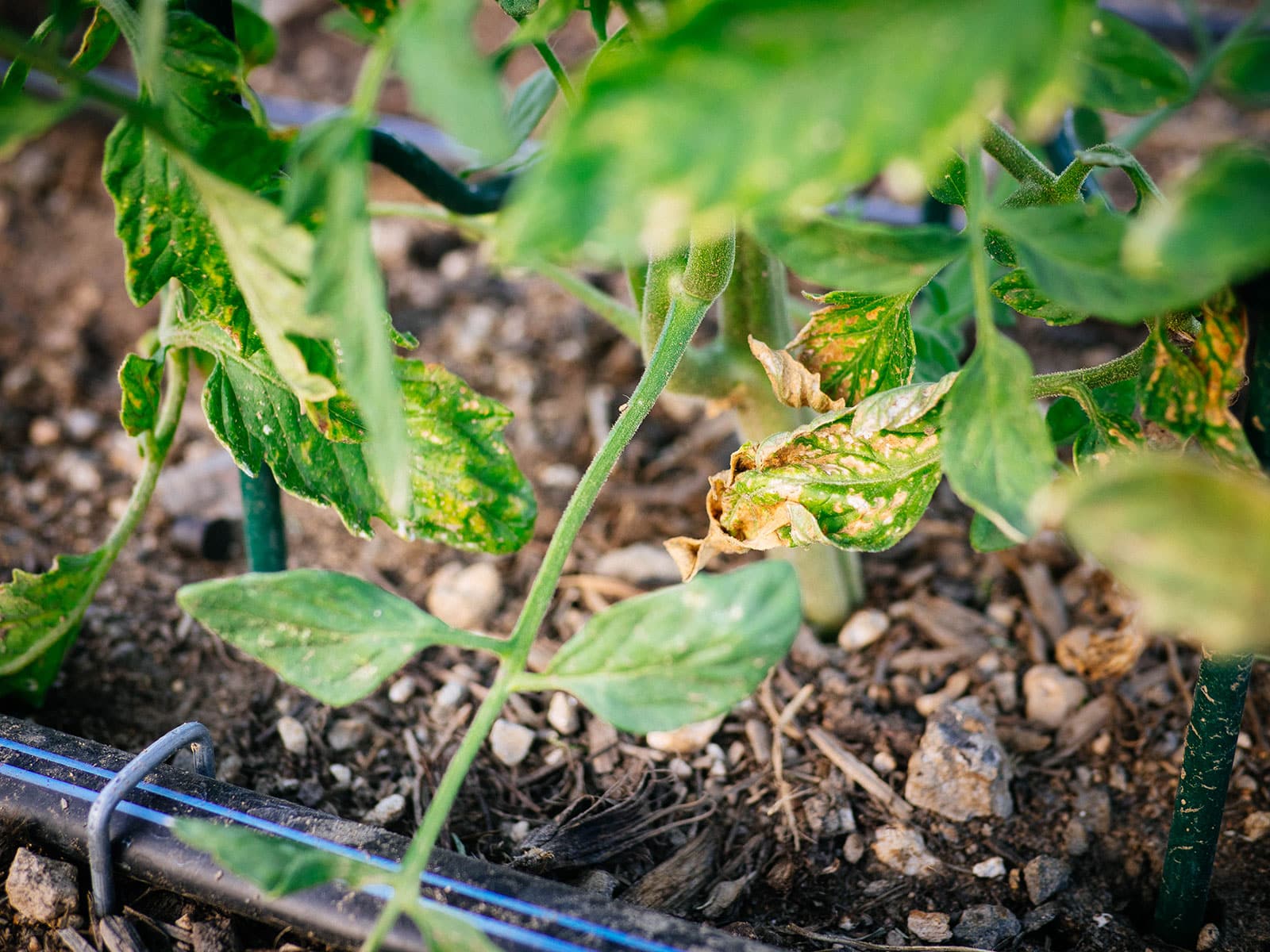
Step 5: Top off plants before the first frost.
Two to three weeks before the first frost, prune the top of your tomato plant by cutting off the tip of the main stem, just above the topmost flowers. Pinch off any flowers or immature green fruits that haven’t yet reached their mature size.
Related: Find your first frost date with my interactive lookup tool
Topping a tomato plant keeps it from growing any taller and producing more foliage, while removing flowers and immature fruits near the end of the season helps redirect the plant’s energy into ripening the fruits it’s already produced. (This is one of the tricks I recommend to get your tomatoes to ripen faster on the vine.)
Can you prune too much?
As beneficial as pruning is to maintain the health of your tomato plant, don’t get overzealous with the pruners and start hacking away at the vines. In regions with long, hot, sunny days, you should actually prune less so you have more leaf coverage over your tomatoes, which helps prevent sunscald.
Overpruning a tomato plant can also weaken it, since fewer leaves are supporting its growth and providing energy for fruit production. And a weakened tomato plant can lead to heat stress or compromised vigor, making it more vulnerable to pests and diseases.
In some cases, heavy pruning may even lead to catfacing (lumpy, deformed, or scarred fruit), as it’s thought to reduce the amount of auxins (growth regulators) in the plant.
Find the sweet spot where your tomatoes can flourish with just the right amount of leaves while giving you a plentiful harvest, and remember that there are no rules in gardening, especially when it comes to pruning.


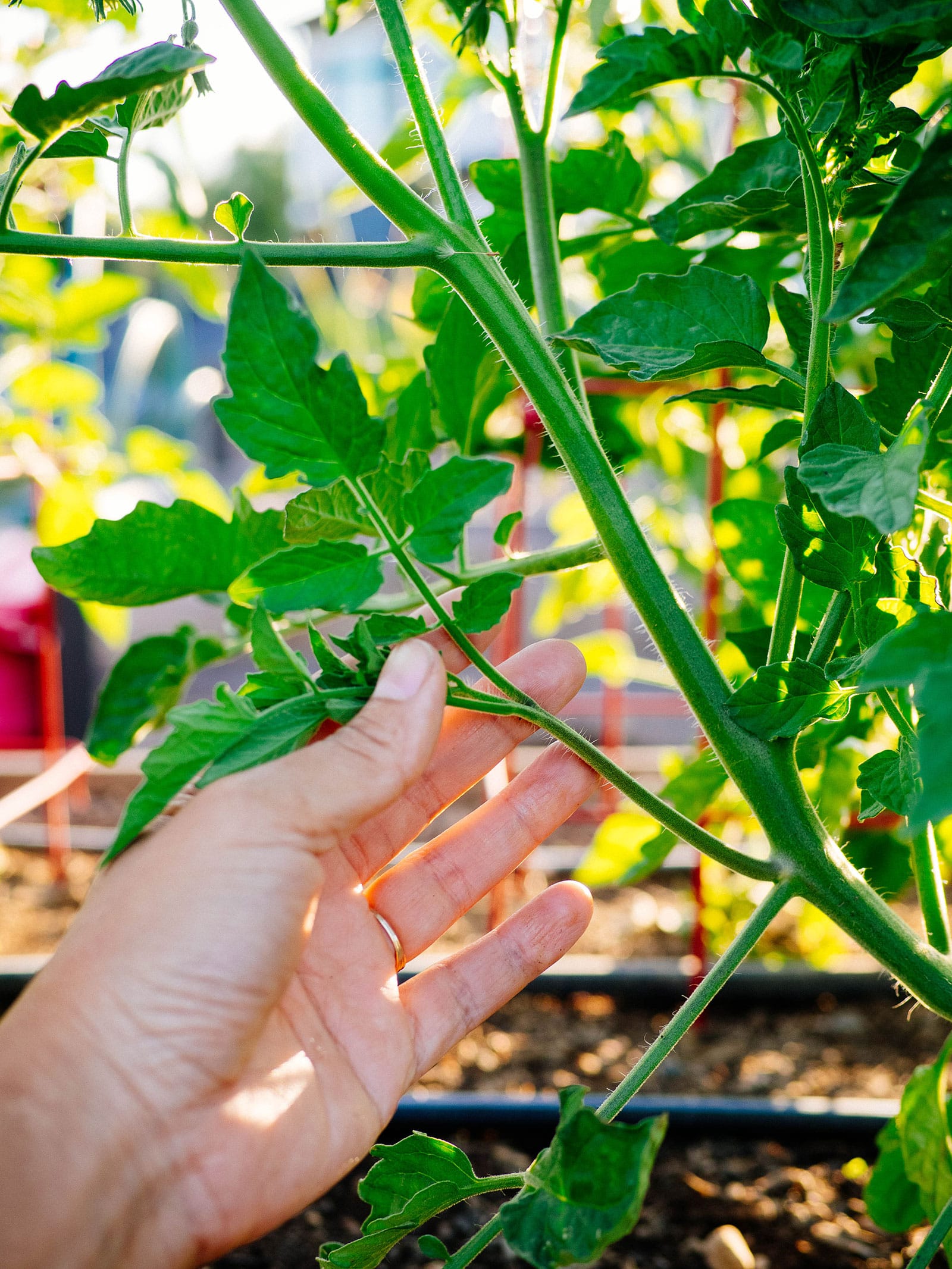
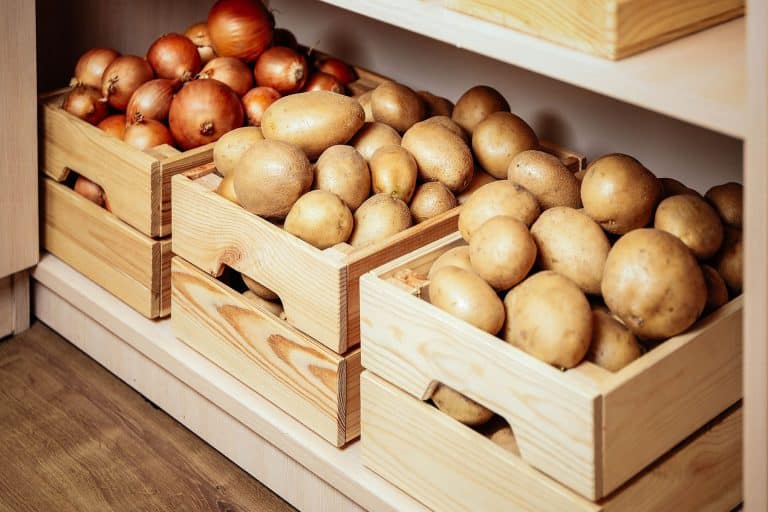
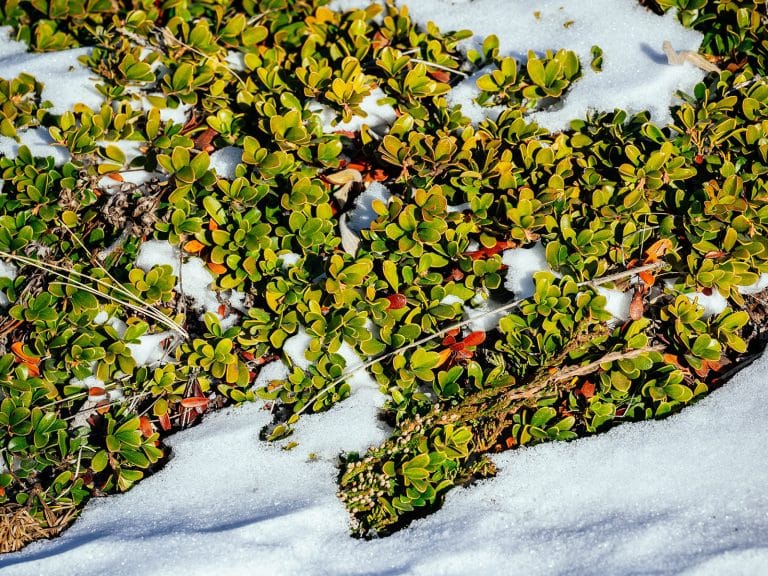
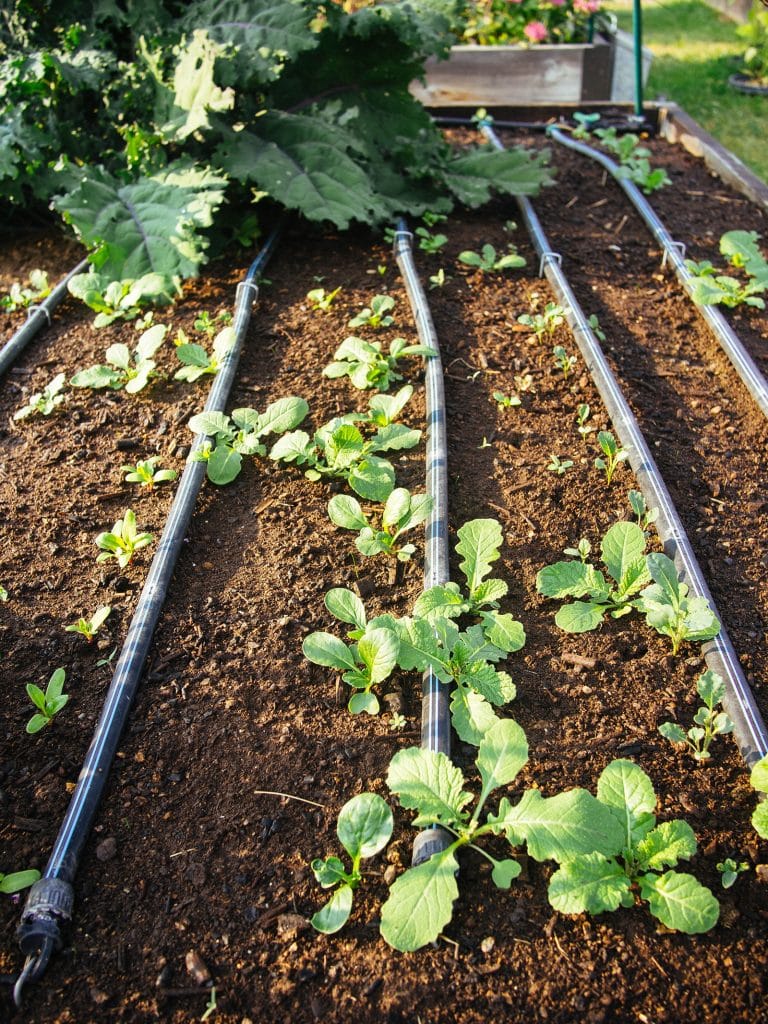
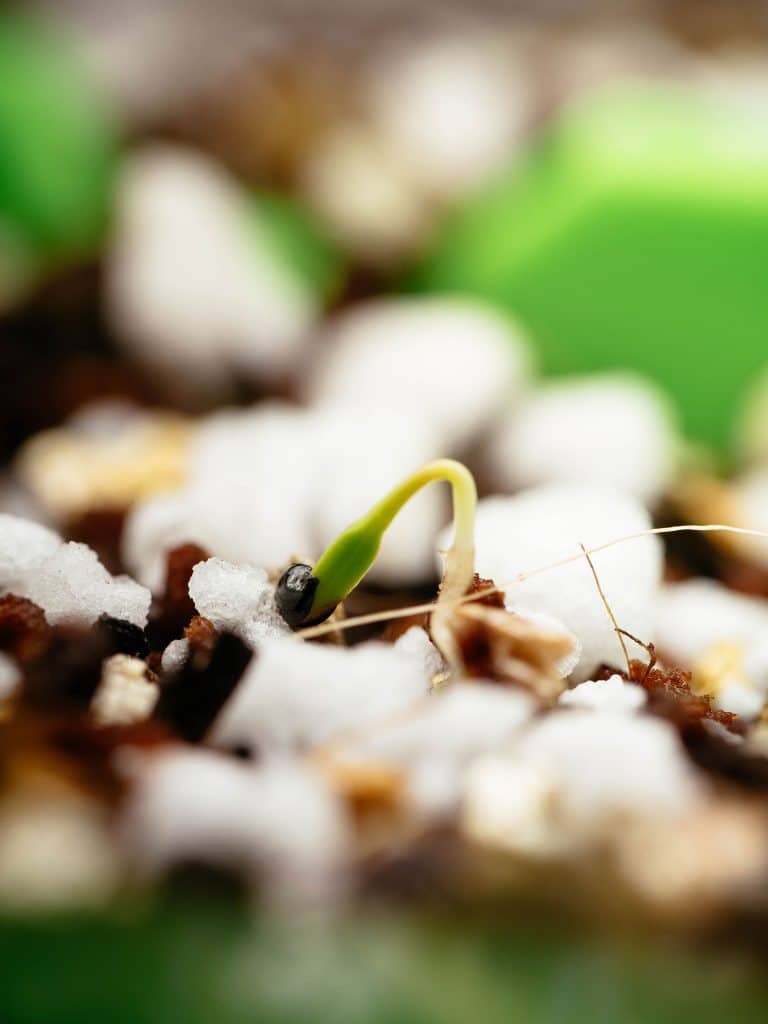

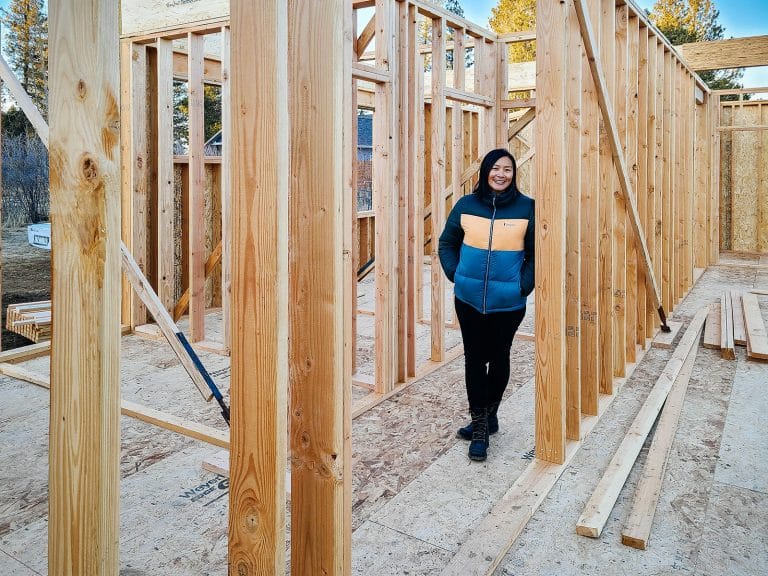
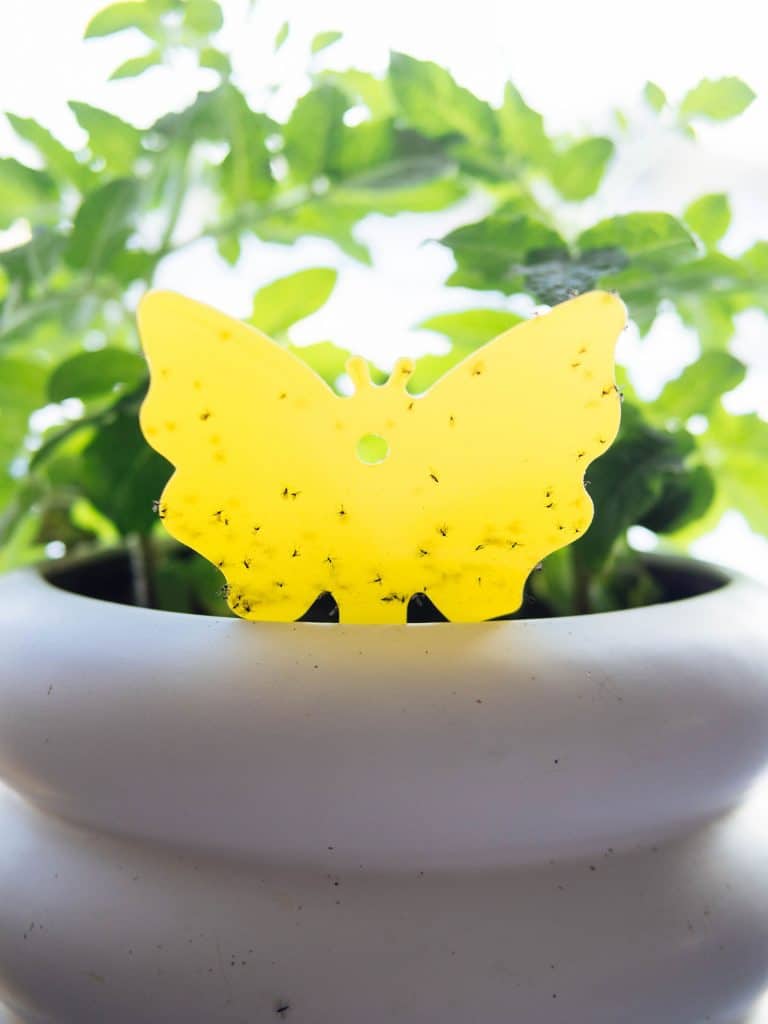
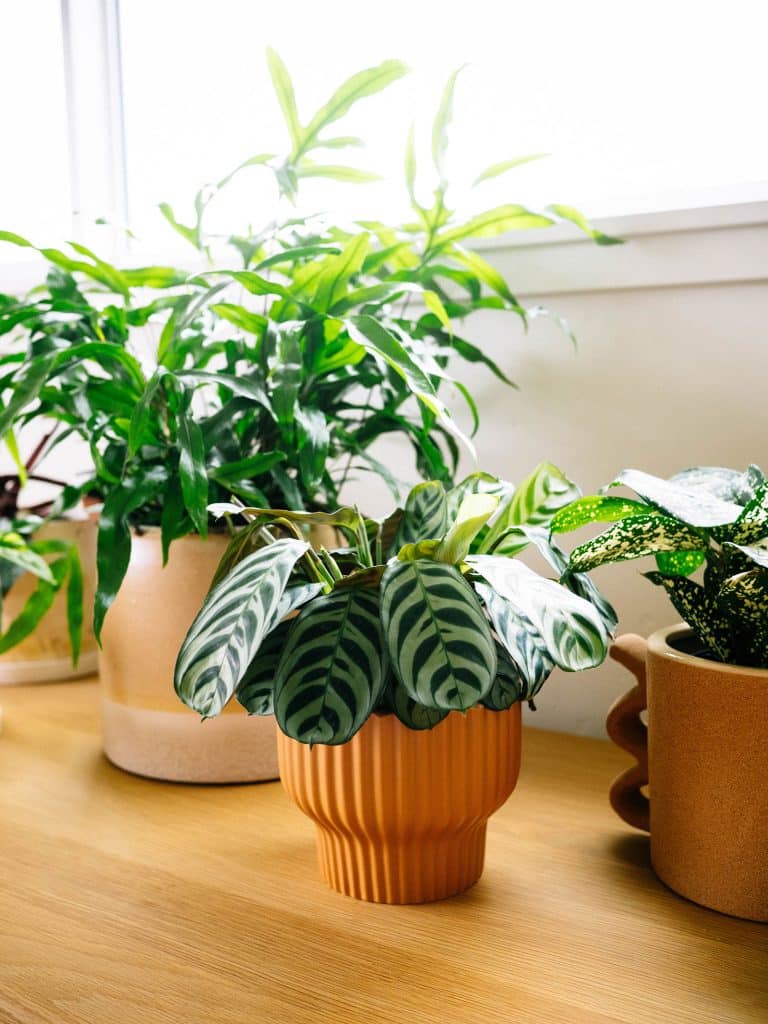
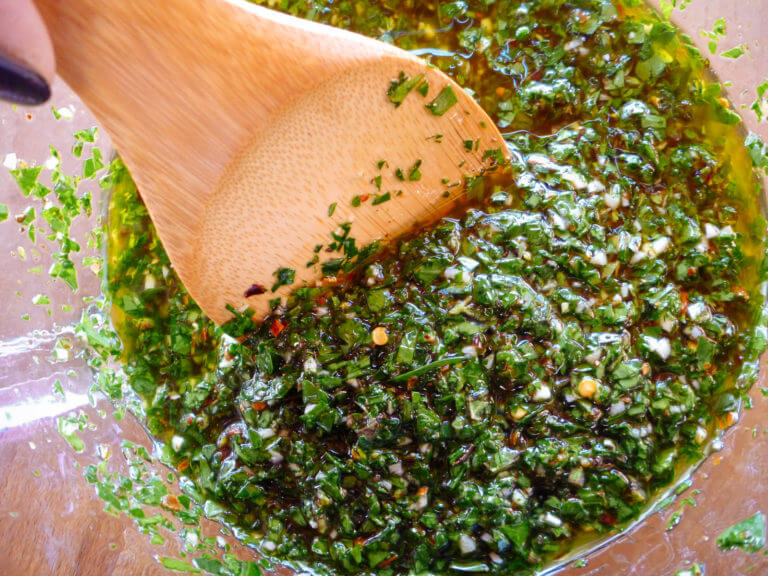

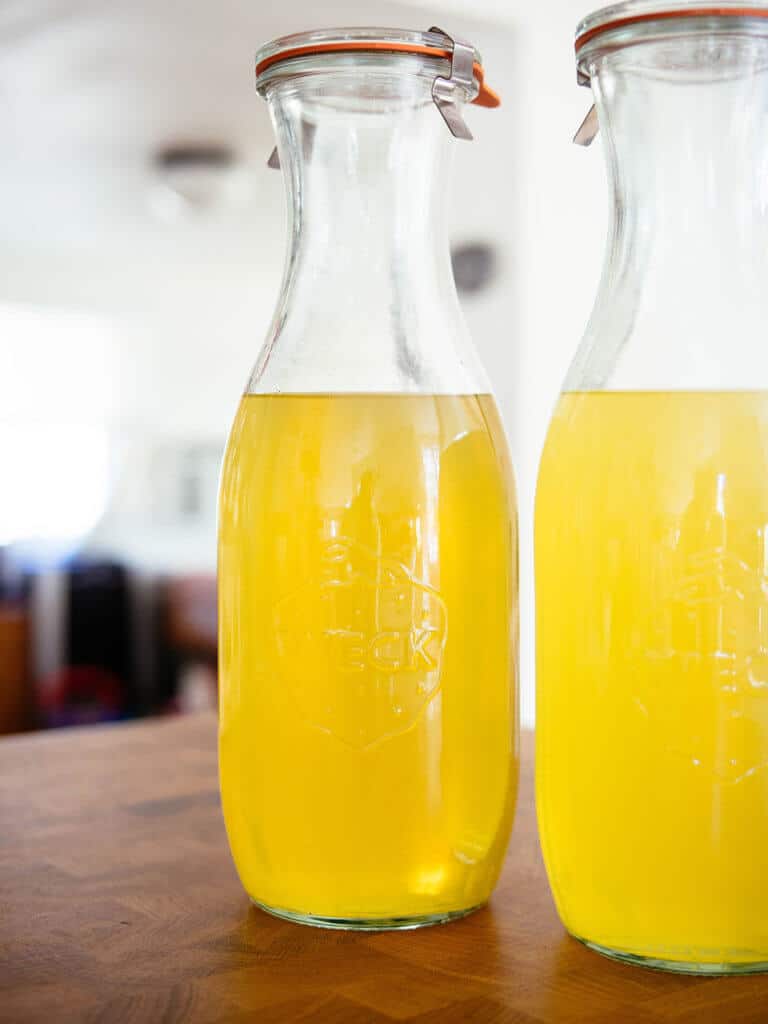
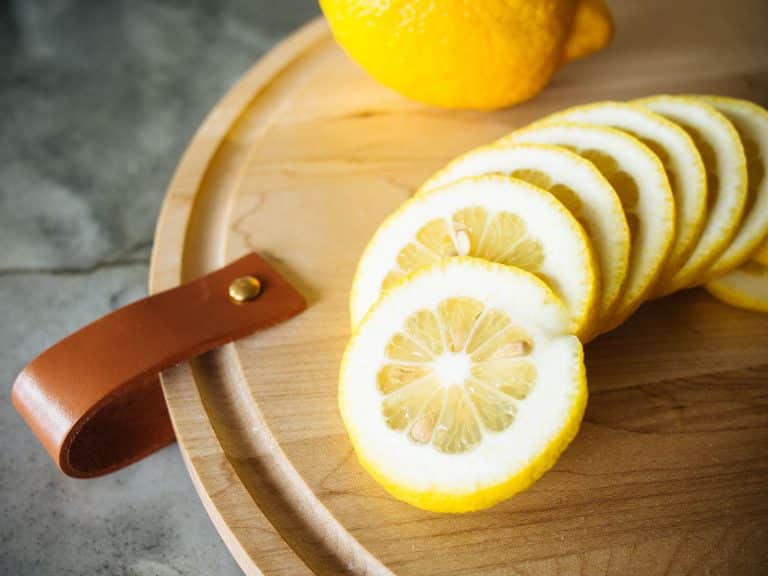

Interesting! Around 1970, when I was growing/foraging/fishing about 95% of my family of 5’s (then 4’s food) , I developed a somewhat similar tomato pruning system. I let PROMISING suckers grow until they produce 2 blossom sets then I snip the end and usually snip suckers on the sucker. I generally kept three leaders. I had unlimited access to chicken manure, about the best garden fertilizer there is, with a shovelful of manure unde reach plant, plus all the other soil amendments I used, a plant easily supported three leaders and the pruned suckers. We also had a very brief frost-free period, and like Linda, in mid-AugustI clipped all leaders back to an inflorescence that had begun to bear fruit. I was freeleancing in mostly technical subjects, so I often had to wear a suit. I saved the bags that the cleaners put over suits, and they easily slipped over the mature plant when a frost was expected. It is important to remove them after dawn if the temperature is above freezing because otherwise the air around the covered plant would get too hot, possibly cooking it. Also, you don’t whant the plant to prepare for heat but for cold. In Massachusetts, 1n the 1970s, I used a single pole for each plant, tying the vines to the pole with strips of cloth torn from old clothes or sheets. (Sheets are the best.). As I’ve mentioned earlier, I planted pole beans and/or Malabar spinach, which automatically did much of the work of tying the tomato plant to the pole as they twined upward. The vines might have been more productive on their own, but I was interested in total yield per square yard, not hauling produce to the county fair. Beans or greens plus tomatoes in the same space as tomatoes alone yield more food than tomatoes alone. I never noticed that the tomatoes suffered any diminution of yield, for that matter. Some ag college graduate student might produce a thesis on various yields, but I had adequate room so if we need more room I just used more space. (That went on for a while and then started working out intensive systems and gradually abandoned…for gardening…the more remote areas. In my case, intensive gardening worked best if you can see all of your gardens from the house and have an outdoor dog for greedy intruders such as woodchucks, rabbits, deer, etc., but not so useful when one of my neighbor’s Holsteins chose freedom and wandered into my patch of mature cabbages.
Thank you, Linda
Your “how to prune tomato plants” is fabulous. After years of indecision and bad “heated” advice, your information makes the most sense. I will be trying your method going forward.
Thank you,
Vera